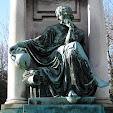Day 1. So what do I do? Put a load of trainers and suchlike in the washing machine. I don't know when - except it was very recently - that I realized that one can do such a thing, but it's been a revelation. Especially welcome, in this instance, because I was very suspicious that the Converse boots were harboring moth eggs/larvae - our permanent, pernicious bane of existence here (the possible sources are numerous).
It was some perverse relief, therefore, to go to the cochineal exhibition at the Folk Art Museum here in Santa Fe (yes! I know how to do leave properly, I truly do - it involves going to a show in a museum, among other things) and look at old fabrics - rugs, copes, embroideries - and count the moth holes and moth damage. Sometimes I feel that I get obsessed, checking daily, spraying lavender essence everywhere - supposedly a repellent - but when I see those chewed little holes in antique fabrics, I realize that it's part of material decay that's everywhere (ok, Matthew 6:19, obviously).
However - the show was wonderful for many other reasons - not least the presence of the Historia general de las cosa de Nueva España by Bernadino de Sahagún - otherwise known as the Florentine Codex - and here in Santa Fe! It was open at the pages that deal with obtaining and producing Nocheztli - cochineal - with drawings - one side of the page in Spanish (dealing with its economic implications), the other side in Nahuatl (describing the etymological and historical connotations). And there was the top coat of General Sir William Napier (from the early C19th) - he seemed to have been tiny - the upper brass had their stroud cloth dyed with cochineal; the ordinary enlisted men had to put up with madder. And there were ceremonial Japanese firefighters capes, and C19th Mexican embroidered tablecloths (with ungainly lions), and cochineal used as the underpainting for iridescent feather work. One thing that's really come to me through the last four years in Art History at USC - through a kind of osmosis as much as anything - is a real appreciation for the importance of trade routes in art and artifacts prior to the C19th - and then the show showed this continuing into the C19th and beyond: the red fragment from the wool lining of Kit Carson's robe; a late C19th Lakota headdress - and then Fortuny dresses, and contemporary Northern New Mexico weaving, including a terrific piece by Lisa Trujillo called Crazy at Heart. We have a couple of her big weavings, which I spend my time guarding against, well, moths.
Leave. It's great.



No comments:
Post a Comment